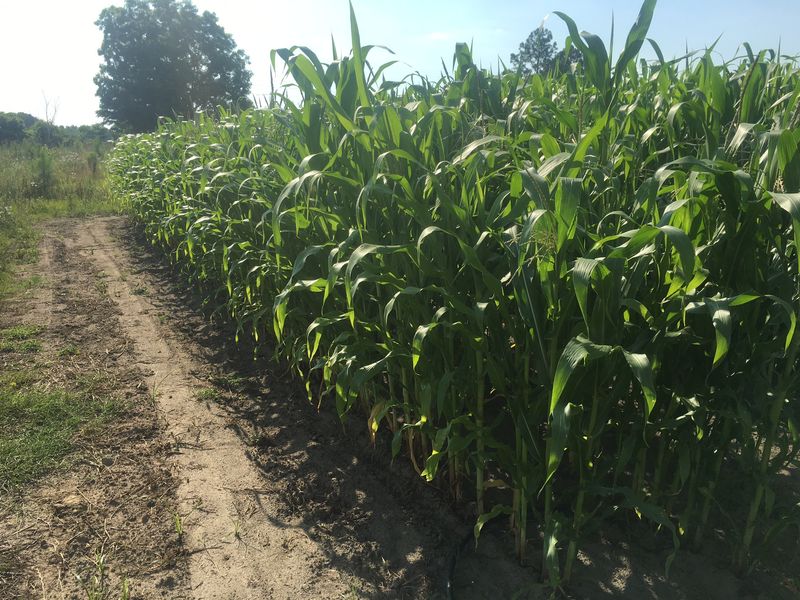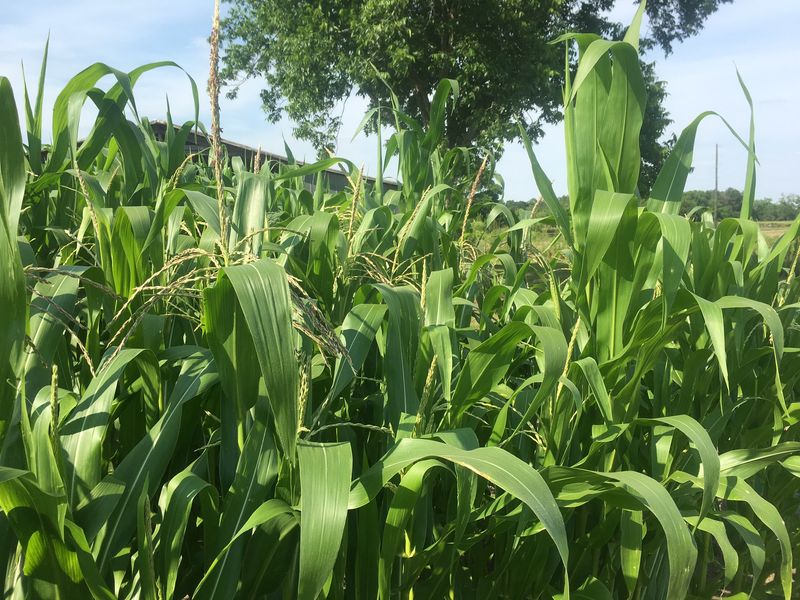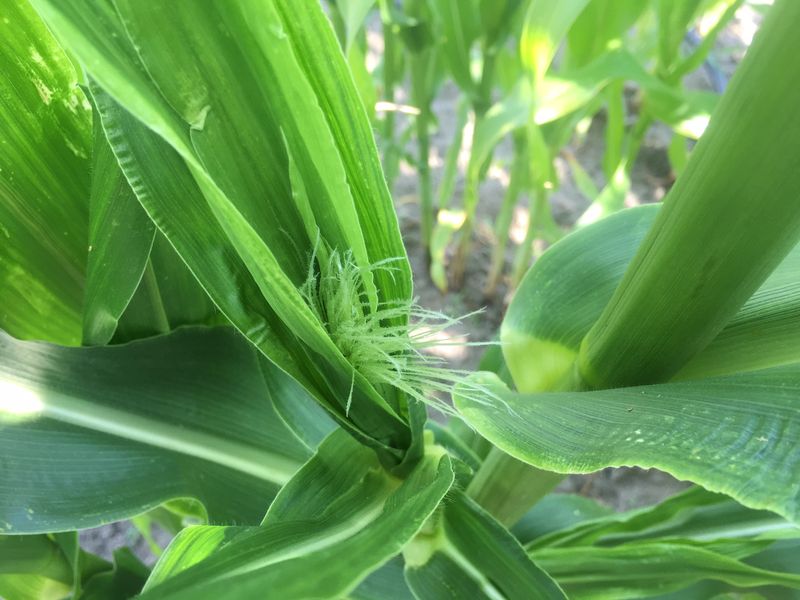Corn Pollination - Growing the Biggest Ears
Silver Queen Sweet Corn
Growing corn has always been a staple here in the south. We look forward to the time of year when tassels and silks form on the corn plants, because we know this means corn pollination is occurring and it won't be long until we have fresh corn on the table. Corn is a heavy-feeding crop that requires quite a bit of water and nutrients to feed those tall plants and produce large, full ears of deliciousness. Adequate water in conjunction with proper corn pollination are the two essentials to producing beautiful ears of corn for summertime enjoyment.
Corn is a self-pollinating plant. It produces a male flower, which is commonly referred to as a tassel, and a female flower, which is commonly referred to as the silks. In order for kernels of corn to be produced by the plant, the male flowers must pollinate the female flowers. The male flower is located at the very top of the plant whereas the female flower is formed along the stalk of the plant. The male flower contains the pollen, which is primarily spread by wind, that will be used to pollinate the female plant. When planting corn, it is important to plant at least three rows side by side to ensure adequate wind pollination.
Tassels (Male Flower)
The female flower, or silks, are threadlike projections from the actual ear or cob of the corn. Each thread or silk represents an individual kernel on that particular ear of corn. Therefore, if the corn pollination goes as planned and each silk is pollinated, you will have a full ear of corn. If you have ears of corn that are not completely full of kernels, it is likely that you didn't receive adequate pollination. While some might think that inadequate corn pollination is due to lack of wind or pollen distribution, it is more often a result of water-starved plants and the timing of female flower development.
The silks contain the most water of any part of the corn plant. So if your corn plants are water-starved, the female flower will be slow to develop. As a result, the male flower will develop much sooner than the female flower, and the pollen will have fallen to the ground by the time the female flower develops. Providing enough water to your corn plants is very important because it helps maintain the rhythm of the development of the male and female flowers. Without any silks to be pollinated, the pollen on the male flower is wasted.
Use Drip Irrigation for Best Corn Pollination
Silks (Female Flower)
Once corn plants become 4 to 5 feet tall, it can be difficult to provide enough water via an overhead source. Most of the water applied overhead will not reach the soil and will be lost to evaporation. Using drip irrigation for corn is a must here in the south. The drip tape irrigation allows us to put water directly where the plants need it. With the drip tape, we don't lose hardly any water to evaporation and almost all the water we deliver is received by the plant. Consider using drip irrigation next season to ensure you get plenty of water to your corn plants so that the timing of flower development will be correct and you'll have great, big ears of corn to eat in the summer.





